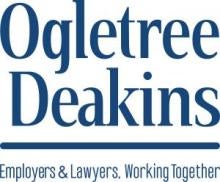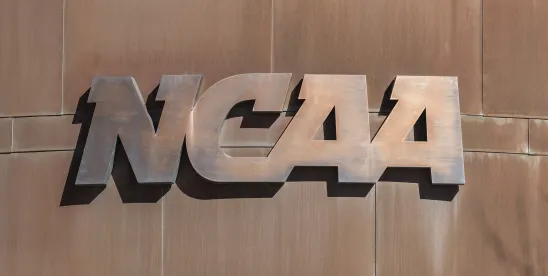A federal judge for the U.S. District Court for the Northern District of California recently approved a groundbreaking, nearly $2.8 billion settlement that promises to reshape college athletics by allowing schools to share revenue directly with college athletes. The settlement stems from antitrust litigation—focused on the labor market of college athletes—that alleged National Collegiate Athletic Association (NCAA) rules restricting or prohibiting athletes from being paid for use of their names, images, and likenesses (NIL) are unlawful restraints on trade that suppressed the labor market for college athletes.
Quick Hits
- A federal judge approved a historic $2.8 billion settlement allowing college athletes to receive direct revenue sharing from their schools, fundamentally changing the landscape of college athletics.
- The settlement requires the NCAA and Power Five Conferences to pay over $2.5 billion to athletes for prior use of their NIL, while also permitting direct revenue sharing with athletes moving forward.
- While the settlement does not constitute a judgment on the competitive impact of the challenged conduct, it represents a significant victory for antitrust enforcement in college sports.
- Other labor issues were not addressed or resolved in the settlement agreement.
On June 6, 2025, U.S. District Judge Claudia Wilken granted final approval to the settlement agreement in In Re: College Athlete NIL Litigation, consolidated litigation brought by a class of nearly 400,000 current and former NCAA Division I college athletes against the NCAA and the biggest college athletics conferences, the so-called Power Five Conferences.
The consolidated litigation addressed claims that NCAA rules restricting or prohibiting compensation for using athletes’ NIL, compensation for athletic services, and scholarship limits violated antitrust law. Essentially, the suits alleged that NCAA rules denied athletes the chance to be compensated for endorsements and media appearances.
Under the settlement agreement, the NCAA and Power Five Conferences will pay college athletes more than $2.5 billion for use of their NIL going back to 2016, and the NCAA will allow schools to start sharing $20 million in revenue directly with college athletes beginning in the 2025-26 school year.
The NCAA’s NIL policies have been a contentious issue for years, with numerous lawsuits challenging the restrictions on athletes’ ability to profit from their own likeness. This settlement marks a pivotal moment in the ongoing debate over athletes’ rights and compensation.
However, payments are on hold as the settlement is facing two appeals that the back payment distributions violate Title IX of the Education Amendments, which prohibits sex-based discrimination in education programs. The appeals reportedly will not impact the revenue-sharing portion.
While the settlement does not constitute a judgment on the competitive impact of the challenged conduct, it represents a significant victory for antitrust enforcement in college sports. Here, we delve into the details of the settlement and its far-reaching implications for antitrust restraint of trade claims that focus on labor markets (as distinguished from product markets).
Key Terms of the Settlement
The settlement stems from three lawsuits: the consolidated House v. National Collegiate Athletic Association and Oliver v. National Collegiate Athletic Association lawsuits, which challenged rules that restricted athletes from being compensated for the use of their NIL and prohibited conferences and schools from sharing revenue received from third-parties for commercial use of the athletes’ NIL; Carter v. National Collegiate Athletic Association, which alleged the NCAA’s rules prohibiting pay-for-play violated antitrust law; and Hubbard v. National Collegiate Athletic Association, which raised claims related to athletes receiving allowed academic achievement awards.
Damages
Under the settlement agreement, the NCAA and the Power Five Conferences will contribute $2.576 billion to a settlement fund over the next ten years to pay former college athletes for the past use of their NIL going back to 2016. The NCAA and Power Five Conferences also agreed to pay $200 million into a settlement fund for class members who competed between 2019 and 2022 to settle the Hubbard claims.
The agreement calls for a $1.976 billion settlement fund for NIL-related injuries, including NIL in broadcasts for certain college football and men’s and women’s basketball players. The settlement agreement also calls for establishing a $600 million fund for class members with pay-for-play claims.
Injunctive Relief
In addition, the NCAA agreed to modify existing rules to allow schools to provide direct benefits and compensation to college athletes worth up to 22 percent of the Power Five schools’ average athletic revenues each year, starting at more than $20 million per school in 2025-26 and growing to $32.9 million per school in 2034-35.
The settlement requires eliminating NCAA scholarship limits, potentially resulting in more than 115,000 additional scholarships annually. However, the NCAA will be permitted to adopt roster limits for Division I sports. Class members who may have roster spots taken away due to the implementation of the settlement will be exempted from the limits and not counted toward their schools’ roster limits for the remainder of their college athletics careers.
Under the settlement agreement, the NCAA will modify rules to allow NIL payments from third parties, except that the NCAA will be allowed to restrict NIL payments from certain third parties associated with schools (i.e., “boosters”).
Finally, the settlement agreement requires that disputes arising from the enforcement of third-party NIL restrictions be resolved via neutral arbitration, changing the current system in which the NCAA makes enforcement decisions and resolves disputes concerning third-party NIL pay prohibitions.
Antitrust Claims
The plaintiffs brought claims under Section 1 of the Sherman Act for unreasonable restraint of trade, alleging that the NCAA’s rules constituted a horizontal agreement that caused anticompetitive effects in the labor market for college athletes. Specifically, they alleged that the rules unlawfully deprived college athletes of compensation for the use of their NIL and “artificially limited supply and depressed compensation” paid to college athletes for their NIL and their athletic service.
The settlement marks a significant shift in how college sports are governed and how athletes are compensated. Most significantly, it allows college athletes to share in the revenue generated by college athletics, allows colleges to offer more athletic scholarships, and prohibits restrictions on NIL pay from unaffiliated third parties.
The elimination of scholarship limits is particularly noteworthy. Under the previous rules, the NCAA capped the number of scholarships schools could offer. By removing these caps, the settlement allows schools to provide more scholarships, thereby increasing access to higher education for many athletes. However, the NCAA will still be able to set roster limits for sports, potentially reducing slots for walk-on (nonscholarship) athletes.
In its seventy-six page opinion approving the settlement, the court repeatedly found that approving the class action settlement had a positive benefit when it comes to contributing to securing a more competitive market for the labor of Division I athletes.
Labor Market Impact
The settlement agreement comes after years of upheaval in college sports amid a barrage of antitrust lawsuits challenging the NCAA’s “amateurism” rules, culminating in the 2021 Supreme Court of the United States ruling in Alston v. National Collegiate Athletic Association, in which the Court held that regulations that limited education-related pay and benefits are unlawful under federal antitrust law. Additionally, several lawsuits have challenged NCAA transfer restrictions with differing outcomes.
This latest litigation challenged rules restricting athletes from being paid for using their NIL. The NCAA has already relaxed such rules and has reached a separate settlement in litigation over rules restricting schools from using NIL compensation as a recruiting tool. The change has allowed current college athletes to sign endorsement deals with third parties and sparked the creation of organized groups of boosters affiliated with individual schools, known as collectives, to pool NIL money and distribute it to athletes at the school.
Under the new settlement, much of that money could be replaced with direct revenue sharing from the schools themselves. Further, the new settlement leaves room for the NCAA to seek to limit the influence of boosters by allowing restrictions on payments from associated third parties.
Still, the settlement will have profound implications for labor markets in college sports. By allowing NCAA college athletes to receive compensation for their NIL and eliminating scholarship limits, the settlement effectively recognizes college athletes’ economic contributions to the college sports industry. This recognition could lead to broader questions about college athletes’ employment status.
Labor Issues Not Addressed by the Settlement
While approving the settlement, the court specifically noted it does not address other labor rights of NCAA college athletes. For example, the settlement does not prohibit college athletes from attempting to unionize, from pursuing wage and hour claims under the Fair Labor Standards Act, or any other federal labor laws or analogous state labor laws.
Potential Future Legislation
The settlement may prompt federal lawmakers to consider new legislation that addresses the employment status of NCAA college athletes and provides the NCAA with clearer guidelines on NIL compensation. The outcome of these legislative efforts could further reshape the landscape of college athletics.
The NCAA has also been pushing the U.S. Congress to pass legislation that would prevent college athletes from being deemed to be employees of schools and to provide the NCAA with an antitrust exemption or immunity to allow it to enforce rules related to transfers and other potential compensation guardrails. The likelihood of such legislation passing remains uncertain.
Next Steps
The settlement is a landmark decision that will have lasting effects on antitrust and labor markets in college sports. Still, further legal questions remain, including regarding the influence of boosters, the lawfulness of certain transfer restrictions, and whether college athletes could be considered employees. Additional litigation over these issues is possible, as is federal legislation addressing college athletes and potential antitrust protection for the NCAA.






 />i
/>i

